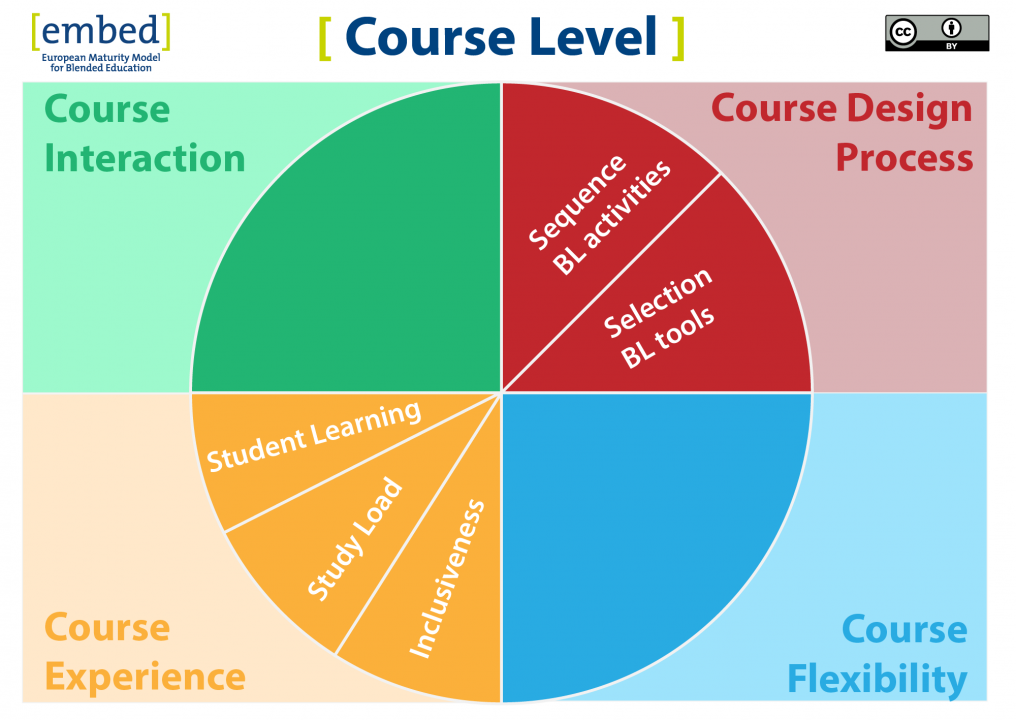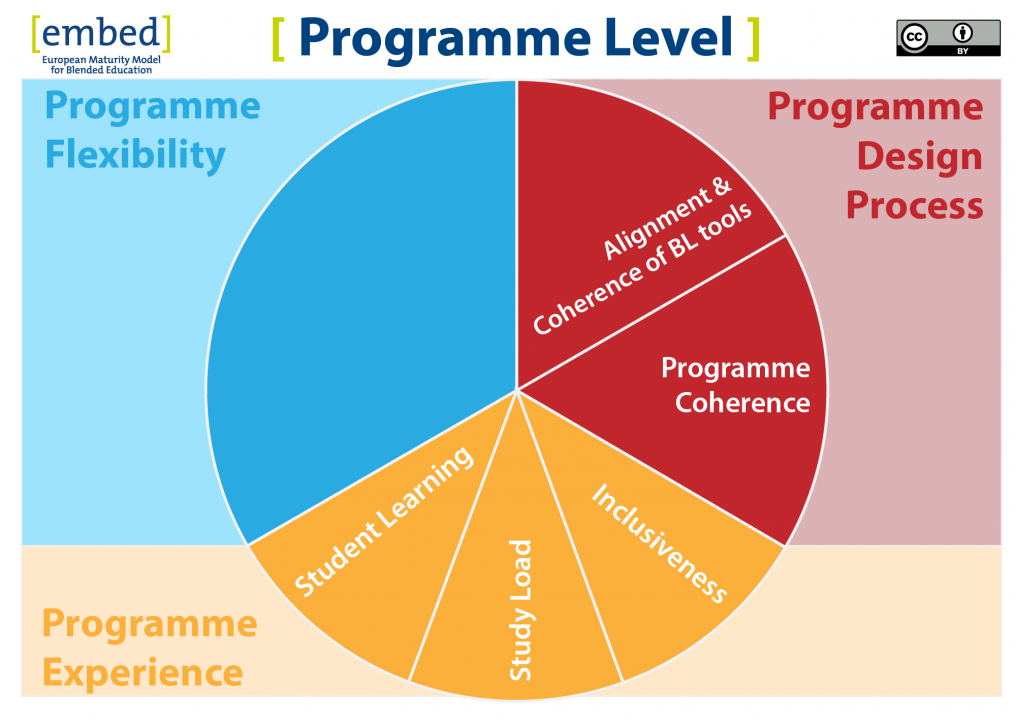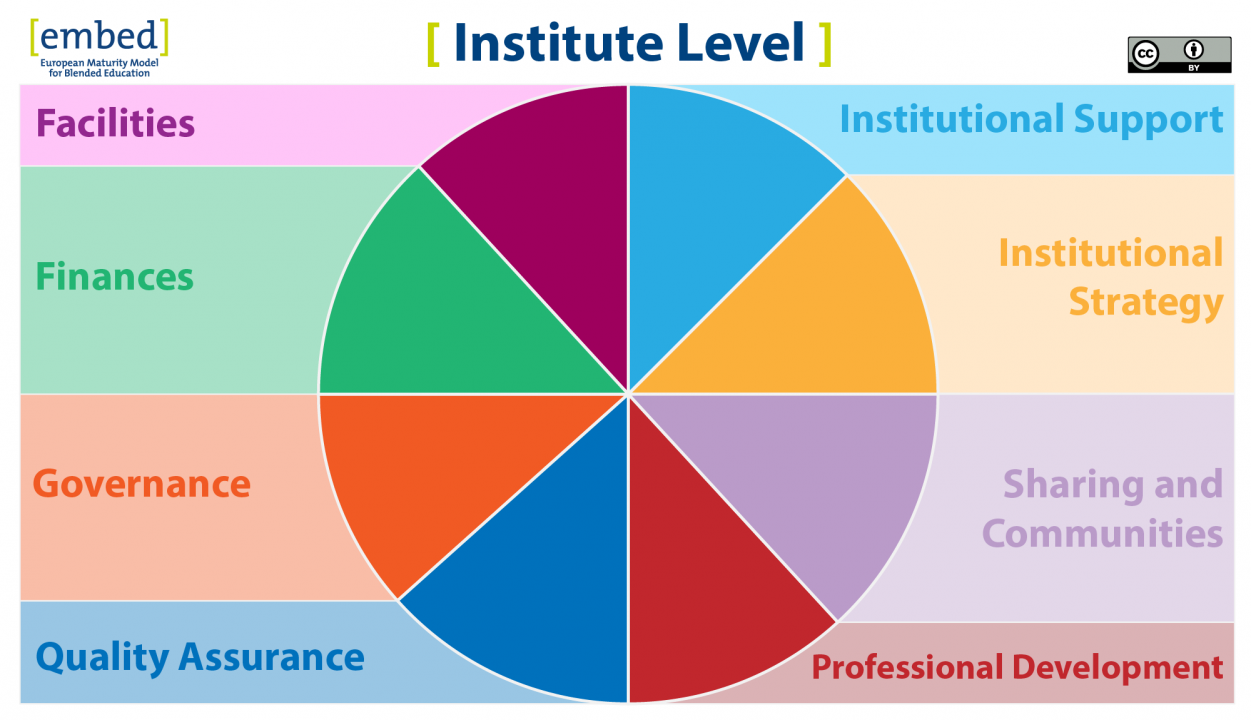EMBED framework presented
Last Monday we presented the final version of the Euopean Maturity Model for Blended Education during a pre-conference workshop of the annual ALT conference in Edinburgh.
This model is a framework which can be used to tackle any conceptual or implementation issues regarding blended learning, teaching and education. It indicates which dimensions are relevant for lecturers and educators, but also institutions, policymakers and educational centres. It aims to help, inspire and guide anyone who wants to implement or improve blended learning in their institution. This model consists of three levels:course level, programme level, and institution level. Each level has multiple dimensions, which together should give a comprehensive overview of the field of blended learning and education. The dimensions include indicators which describe the level of maturity. The dimensions and indicators can help to determine your own level of maturity.
Realisation of the model
The EMBED model is based on thorough research by KU Leuven. The research consists of a literature research toward the concepts of blended learning, teaching and education, and also dozens of interviews with educators and management of the EMBED partners. Based on this research, the first draft of the
maturity model was compiled. In the period from December 2018 until July 2019, the maturity model is validated by more than 20 experts from Europe. All these experts have multiple years of experience with blended learning or education. The model is validated by using a Delphi study. This means that experts reached consensus regarding the dimensions and indicators of the Maturity Model. The version is the validated version of the European Maturity Model.
Definitions
For this framework we use the following definitions:
Blended Learning = learning as a result of a deliberate, integrated combination of online and face-to-face learning activities.
Blended Teaching = designing and facilitating blended learning activities.
Blended Education = the formal context of blended learning that is determined by policies and conditions with regard to the organization and support of blended learning.
In the documents attached you find the complete list of preliminaries that we assumed for the model.
Course Level
The course level ‘refers to the core of the educational system, where both learning processes and instructional processes are situated’. It refers to the primary educational process, in other words the development, execution and evaluation of courses. The stakeholders of this level are mainly teachers/educators and students, but also instructional designers, learning developers, content developers and sometimes management.
The course level consists of the following four dimensions and corresponding subdimensions:

Programme Level
The program level refers to educational programs or curricula. A program is a structured series of educational courses. The stakeholders of this level are mainly teachers/educators and students, but also instructional designers, learning developers, content developers and management.
The programme level consists of the following three dimensions and corresponding subdimensions:

Institute Level
The institutional level refers to the formal context of blended learning and education. This is determined by policies and conditions with regard to the organization and support of blended learning. At the institutional level different key actors, teams, or bodies play a role in the decision- making process. Among
others, program coordinators and heads of teaching and learning centers are involved. The institution level consists of the following eight dimensions:

Download
Next Steps
We continue to work on the model and are developing a self assessment tool and guidelines with examples how to become more mature in blended education.
1 comment
Comment from: Ewoud de Kok [Visitor]
Form is loading...
